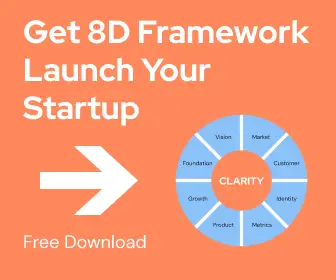Tired of boring marketing that just shoves products down people’s throats?
You know what I’m talking about. If you quickly open your email inbox, you’ll find plenty of these unoriginal ads that just blend into the background noise.
I bet it doesn’t leave the best impression and you certainly don’t remember those brands as “unique” or “special”.
There’s a Better Way
PR as a form of marketing is about crafting a story that resonates with your audience, making them remember you as a unique and valuable brand.
Now, if the first thought you had after reading the title was “I thought PR and marketing were the same thing?”, please read this short article on the difference between these two powerful strategies.
Think about it:
- If you want people to remember your brand, you need to give them a reason to.
- If you want them to trust you, you need to build a relationship.
- If you want them to buy, you need to show them why your brand is the best solution for their needs.
PR: Beyond the Sales Pitch
PR isn’t just about selling products. It’s about building a strong brand image that attracts customers, investors, and the media. It’s about becoming known for something unique and valuable.
Here’s How to Make it Work
Step 0. Always! Set! Measurable Goals.
Before even starting to build your PR, you need to know how you will know when it’s successful.
- A successful product launch?
- Increasing your social media presence by X %?
- A surge in website traffic?
Be specific and break your goals into trackable milestones. Don’t just say “I want to increase brand awareness”. Get granular!
You may also want to set yourself a timeline.
For example, develop a PR strategy that lasts for 6 months or a year.
Step 1. Explore Your Audience
Who are you trying to reach? What are their pain points? What are their needs? What are their dreams?
Once you know exactly who you’re creating the campaign for, you can develop public relations campaigns that resonate with your target market and build positive buzz.
Step 2. Analyze Your Current PR Efforts
If you haven’t had a PR campaign yet, just skip this part.
But if you had you can see what works and what doesn’t. Look back and ask yourself:
- What type of message are you using?
- Are you working with the right influencers?
- Is your target audience engaging with your content?
- Do you see any positive results from your public relations campaigns?
If you don’t see the results you want, don’t worry. This is the time to adjust your public relations strategy. Oh! Keep in mind that it takes time to see results from PR campaigns, so don’t judge it on the 2nd day.
Step 3. Research Your Competition
Take a peek at your competition: what’s working well for them and what’s not.
Use this information to find your unique selling proposition and stand out from the crowd.
Being unique and offering what your competition doesn’t is how you’ll draw more attention to your brand.
Step 4. Identify External Influences
Some external factors can influence your public relations strategy. These include current events, industry trends, and even the weather.
For example, if there’s a new industry trend, you might want to use it in your PR. Adjusting to the industry is what can easily make you look like an expert in your field.
Step 5. Track Your Progress
Don’t just assume things are working. Track key metrics to understand what’s working and what’s not.
- Website Traffic: How many people visit your website?
- Share of Voice: How much are people talking about you compared to your competitors? You can see where your brand is mentioned in many places, such as news and magazine articles, television reports, radio conversations, social media mentions, social shares…
- Media Mentions: Are you getting positive press? Are you receiving compliments, or are people saying to stay far away from your company?
- Sales: Do you notice an increase in sales following a PR campaign?
Again, don’t always expect the sales to shoot up to the moon immediately.
PR in marketing is about increasing brand awareness and brand image which indirectly increases sales.
Note Key Dates For Your PR Campaigns: For example, if you own a fashion brand, you’ll want to align your public relations campaigns with major fashion weeks. Or, if you’re launching a new product, you’ll want to see that your public relations efforts are timed correctly around the product launch date. Capitalize in events such as Christmas or Black Friday!
The Actual PR Methods to Build a PR Campaign
If you’re a small business that counts marketing budgets – you probably don’t need ALL of them.
You do you. We’re here to let you think, not to guide you directly.
Generate Media Relationships
Whether it’s with a media outlet, reporter, or influencer, having awesome relationships with the people who control the public’s attention is essential for your public relations. Get to know them!
How to do it:
- Send newsworthy press releases
- Call or email reporters with story ideas
- Connecting on social media
Manage Internal PR
It’s been proven time and time again that spending some money to keep your employees happy is one of the most lucrative things you could do.
Happy employees lead to a positive workplace culture, improved customer service, and increased sales. They are your best brand ambassadors. Make sure they are proud to work for you and spread your message to the world.
How to do it:
- Staff newsletters
- Company intranets
- Employee training programs
- Monthly or quarterly meetings
- Recognition programs
Organize and Attend Events
Press conferences, sponsored charity events, workshops, and product launches can generate positive publicity. Attending trade shows or industry conferences can also be a great way to get noticed.
Get Involved in The Community
Show that you care about more than just making money.
This PR tactic isn’t for every business. But if you do it it can easily help you stand out from the rest.
Indirectly, it can help you make more money! Ironic, right?
How to do it:
- Sponsor local teams
- Donate to charity
- Volunteer
Develop a Crisis Communication Plan
Be honest: Things happen. Get prepared to handle a future crisis effectively and protect your reputation.
How to do it:
- Have a contact list for emergencies
- Create key messages to communicate
- Have a plan for reaching out to the public
Types of Media: Earned, Owned, and Paid
Every PR strategy has to deal with these three types of media: Earned, Owned, and Paid. Think of them as the building blocks of your PR efforts.
Earned Media: The Holy Grail
This is the gold standard and the most valuable type of public relations. It’s publicity you have not paid for. Free advertising!
You earn it through hard work and a great brand. It’s the kind of PR that makes people talk.
Examples:
- News stories featuring your brand
- Positive mentions on social media
- Favorable blog posts and reviews
- Glowing customer testimonials
- High SEO rankings
Why It’s Valuable: It’s free, and it comes from trusted sources, making it more credible.
The Catch: You can’t just buy it. You have to earn it by building a strong brand, creating compelling content, and engaging your audience.
Owned Media: Your Control Center
Owned media is anything you control entirely as you own the platform or content. It’s your voice.
Examples:
- Your website or blog
- Your social media platforms
- Your social media content
- Your email list
- Your podcast
Why It’s Important: It gives you complete control over your message and how your brand is portrayed. You’re not at the mercy of someone else’s opinion!
The Downside: It requires consistent effort and a commitment to creating high-quality content to keep your audience engaged.
Paid Media: Boosting Your Reach
While scrolling through social media, have you ever noticed some posts labeled ‘sponsored’?
This is where companies invest to get their message in front of more people. It’s about amplifying your voice and reaching new audiences.
Examples:
- Social media ads
- Paid reviews or testimonials
- Display ads on websites
- Influencer marketing
- Product placement
Why It’s Powerful: It can help you target specific audiences and drive immediate results.
The Key: Make sure your paid media campaigns are strategic and deliver a strong return on investment (ROI).
The best PR strategies often blend these three media types together. Use owned media to build a strong foundation, earned media to amplify your reach, and paid media to boost your visibility.
PR Tools: Make It Easier
You might be a bit worried as to how to implement it all.
Thankfully, you can make your life much easier by automating tasks with PR tools.
Some of the most popular PR tools:
- PRWeb: It allows you to distribute press releases to various media outlets. You can also track how many people read your release and where it’s picked up.
- Cision: Manage your public relations by providing you with tools to track media coverage, connect with journalists, and measure the impact of your PR efforts.
- Google Alerts: Track when your brand is mentioned online. You can set up alerts for specific keywords, so you’ll always be in the loop when people talk about your company. Oh! And it’s free to use!
- Agility PR Solutions: Similarly to Cision, this tool can give you the tools to monitor media coverage, distribute press releases, and analyze PR performance.
Takeaways: PR as Your Secret Marketing Weapon
To recap, using PR as a form of marketing can tremendously improve the way your customers view you.
Are you just another company trying to make money or do you genuinely love and care for your customers?
Using PR as a form of marketing will ensure you’re remembered as the latter.








